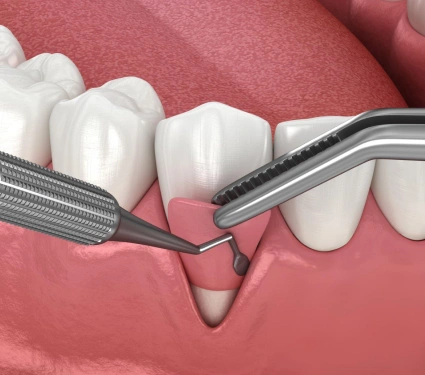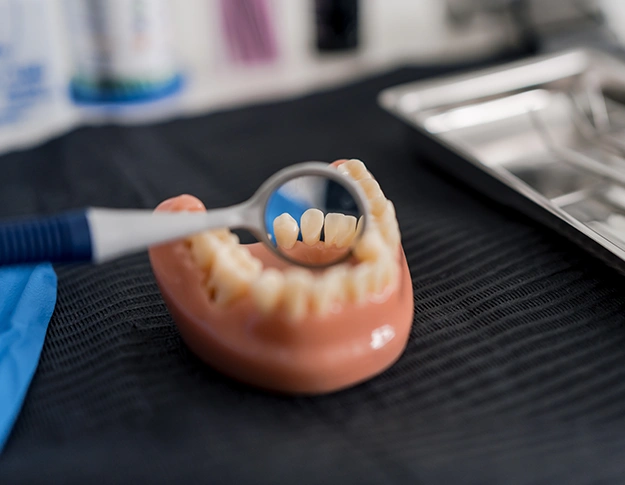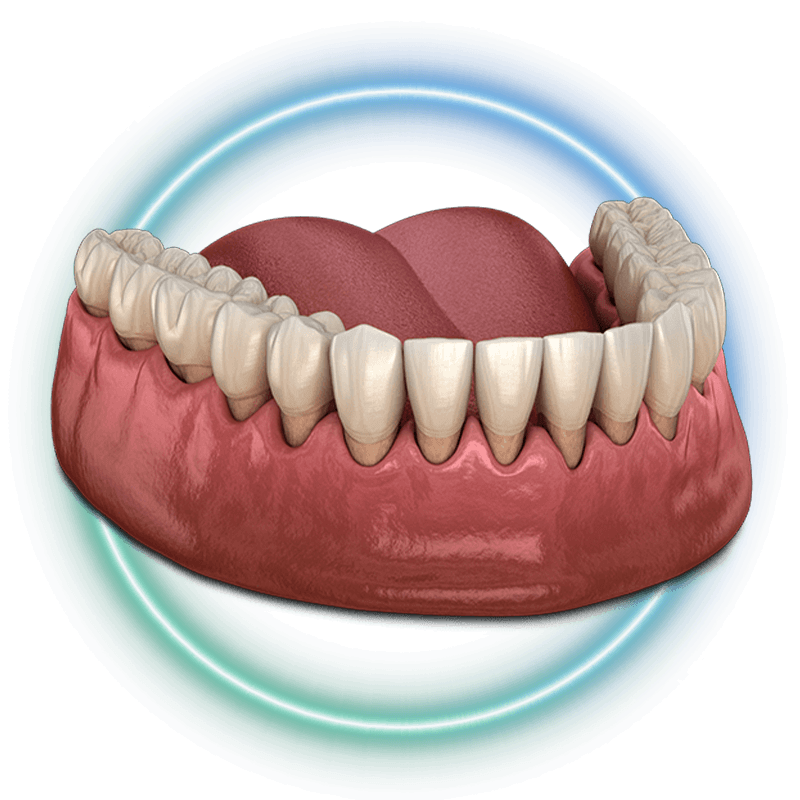
Non-Surgical Procedures:
Scaling and Rooting
Scaling and root planing is the gold standard for managing gum disease in its early stages and preventing further progression. Scaling involves using specialized tools to carefully remove plaque and hardened tartar (calculus) from below the gumline, areas that regular brushing and flossing cannot reach. Root planing then smooths the root surfaces, making it harder for bacteria to cling and colonize.
This process not only helps reduce inflammation and bleeding in the gums but also promotes the reattachment of healthy gum tissue to the teeth. With regular maintenance and follow-up, scaling and root planing can be a powerful tool in managing and reversing gum disease.
Understanding Gum Disease: Periodontitis and Gingivitis
Gum disease, or periodontal disease, is a progressive condition caused by bacterial buildup along the gumline. The first stage, gingivitis, involves mild gum inflammation and can often be reversed with good oral hygiene and professional cleanings. However, if left untreated, gingivitis can progress into periodontitis.
Periodontitis is marked by deeper infections within the gum and supporting bone, leading to pockets between the gums and teeth. As these pockets deepen, they provide an ideal environment for harmful bacteria to flourish. Over time, this can lead to severe gum recession, bone loss, and even tooth loss. Non-surgical procedures like scaling and root planing are essential interventions to halt periodontitis, helping patients regain healthy gums and preserve their natural teeth.
Periodontal Surgery

Osseous Surgery
Osseous surgery, or pocket reduction surgery, is typically recommended for patients with advanced periodontal disease. During this procedure, the surgeon will make small incisions in the gums to access infected areas and smooth damaged bone tissue. The goal is to reduce the depth of gum pockets and create a more stable foundation for teeth.
By removing diseased tissue and reshaping the bone, osseous surgery improves the gums’ ability to heal and reattach to the teeth, reducing the likelihood of further infection. This procedure not only saves teeth but also enhances the overall structure and function of the mouth, helping patients maintain oral health for years to come.

Bone Grafting
Bone grafting is often necessary when periodontal disease has caused significant bone loss around teeth. This procedure involves placing grafting material—either natural bone or a synthetic substitute—in areas where bone density is lacking. Over time, the graft encourages the body’s own bone to regenerate, creating a solid foundation for existing teeth or future dental implants.
Bone grafting is crucial for preserving facial structure and preventing the teeth from shifting. For patients considering implants, bone grafting ensures there is enough bone to anchor the implant securely, making it an essential part of comprehensive periodontal treatment.

Bone Regeneration
Bone regeneration, also known as guided tissue regeneration, is a specialized procedure designed to encourage new bone growth in areas where periodontal disease has caused deterioration. During the procedure, the dentist places biocompatible membranes around areas of bone loss, providing a scaffold for new bone cells to grow and heal.
This treatment is highly beneficial for patients who wish to preserve their natural teeth and avoid tooth loss. Bone regeneration is also an important step for those considering dental implants, as it provides the necessary bone support for successful implantation.

Gum Graft
Gum grafting is an advanced periodontal procedure used to restore gum tissue lost due to gum recession. Recession can occur for several reasons, including periodontal disease, aggressive brushing, or genetics. During a gum graft, tissue—usually harvested from the roof of the patient’s mouth or from a donor source—is carefully grafted onto the affected areas.
Gum grafting not only improves the appearance of the smile by covering exposed roots, but it also protects sensitive tooth roots from decay and discomfort. This procedure prevents further gum recession and reduces the risk of bone loss, making it an essential treatment for maintaining both oral health and aesthetics.

Chao Pinhole Surgical Technique
The Chao Pinhole Surgical Technique is a minimally invasive alternative to traditional gum grafting for treating gum recession. This innovative procedure involves creating a small “pinhole” in the gum tissue, through which the dentist can gently loosen and reposition the gums to cover exposed roots.
Unlike traditional grafting, the pinhole technique requires no incisions or sutures, resulting in less discomfort and faster recovery times. This procedure can often address multiple teeth in a single session, providing immediate aesthetic improvement. For patients looking for a less invasive option to correct gum recession, the Chao Pinhole Surgical Technique is a highly effective solution.
Esthetic Crown Lengthening
Esthetic crown lengthening is a cosmetic procedure designed to reveal more of the tooth structure, creating a more balanced and appealing smile. This procedure is often recommended for patients who feel they have a “gummy” smile or whose gum line covers too much of the teeth.
During crown lengthening, the dentist carefully removes excess gum tissue and, if necessary, reshapes the underlying bone. This exposes more of the natural tooth, providing a harmonious smile line. Beyond aesthetics, crown lengthening can also be performed to prepare teeth for restorative procedures, such as crowns or veneers, ensuring a stable and functional result.

Periodontal Plastic Surgeries
Periodontal plastic surgeries encompass a range of procedures aimed at enhancing the appearance and function of the gum tissue surrounding the teeth. These surgeries may include procedures like gum contouring, ridge augmentation, or soft tissue grafting, all tailored to meet the specific needs of each patient.
These surgeries address various concerns, such as gum recession, asymmetrical gum lines, or exposed roots, helping patients achieve a more attractive smile. Periodontal plastic surgeries not only enhance aesthetics but also contribute to the health and longevity of the teeth by providing added protection and support.

Frenectomy
A frenectomy is a straightforward surgical procedure that removes or alters the frenum—a small piece of tissue connecting the lips or tongue to the gum area. In some cases, a tight or overgrown frenum can cause issues such as gum recession, speech difficulties, or restricted tongue movement (commonly known as being “tongue-tied”).
During a frenectomy, the dentist will either remove or reposition the frenum to allow for greater freedom of movement and reduce the risk of future gum damage. This procedure is often performed on children to correct tongue-tie or speech issues, but it is also beneficial for adults experiencing discomfort or gum-related complications. A frenectomy is a simple, effective solution that greatly improves oral function and comfort.
Find out if you're a
Candidate for Periodontal Treatment
